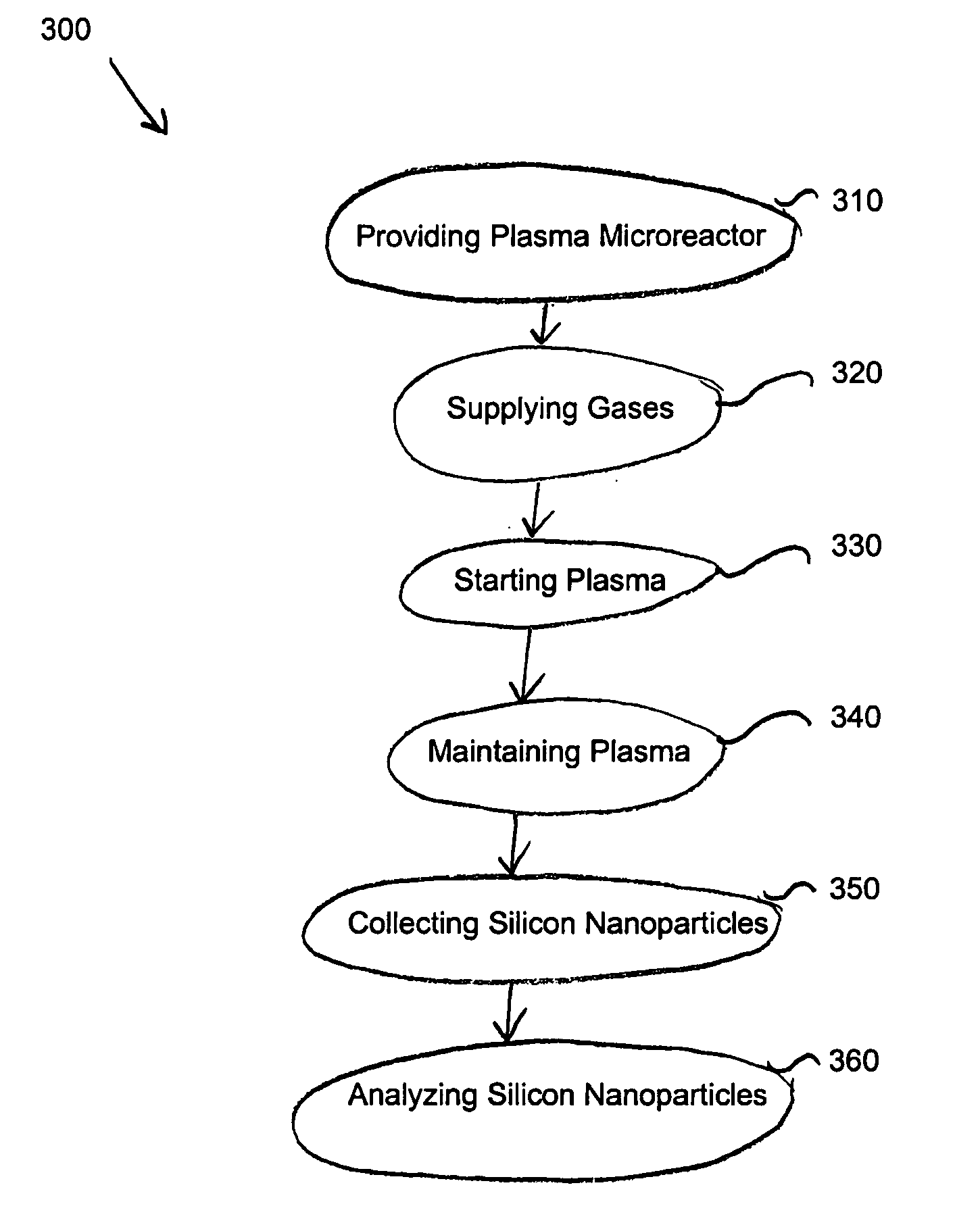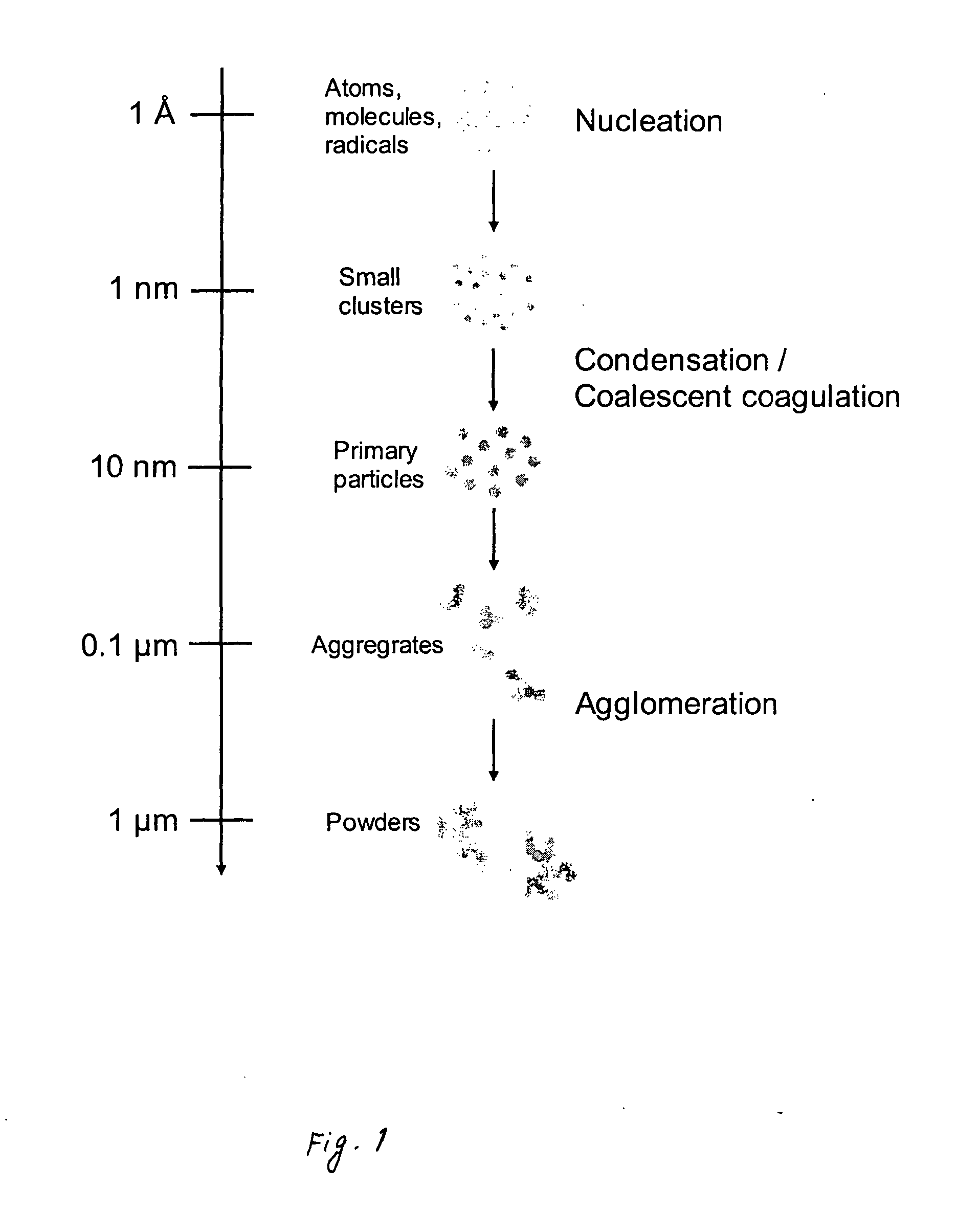System and method for making nanoparticles using atmospheric-pressure plasma microreactor
a plasma microreactor and plasma technology, applied in the field of nanotechnology, can solve the problems of difficult production of blue-light emitting np-si and alter the emission characteristics, and achieve the effects of reducing the risk of coagulation, accelerating particle growth, and narrowing the size distribution
- Summary
- Abstract
- Description
- Claims
- Application Information
AI Technical Summary
Benefits of technology
Problems solved by technology
Method used
Image
Examples
Embodiment Construction
[0037] The present invention relates generally to the field of nanotechnology. More specifically, the invention provides a method and system for making nanoparticles using an atmospheric-pressure plasma microreactor. Merely by way of example, the invention has been applied to making silicon nanoparticles, but it would be recognized that the invention has a much broader range of applicability.
[0038] FIGS. 2(A) and 2(B) each show a simplified system for making silicon nanoparticles according to an embodiment of the present invention. These diagrams are merely examples, which should not unduly limit the scope of the claims. One of ordinary skill in the art would recognize many variations, alternatives, and modifications. A system 200 includes a cathode 210, an anode 220, a sealing tube 230, particle collector 260, a size classifier 270, and an electrometer 280. Although the above has been shown using a selected group of components for the system 200, there can be many alternatives, mo...
PUM
| Property | Measurement | Unit |
|---|---|---|
| Diameter | aaaaa | aaaaa |
| Diameter | aaaaa | aaaaa |
| Diameter | aaaaa | aaaaa |
Abstract
Description
Claims
Application Information
 Login to View More
Login to View More - R&D
- Intellectual Property
- Life Sciences
- Materials
- Tech Scout
- Unparalleled Data Quality
- Higher Quality Content
- 60% Fewer Hallucinations
Browse by: Latest US Patents, China's latest patents, Technical Efficacy Thesaurus, Application Domain, Technology Topic, Popular Technical Reports.
© 2025 PatSnap. All rights reserved.Legal|Privacy policy|Modern Slavery Act Transparency Statement|Sitemap|About US| Contact US: help@patsnap.com



